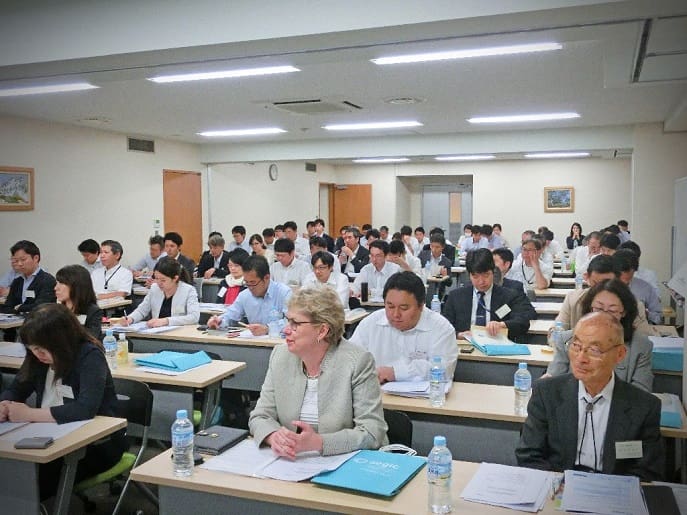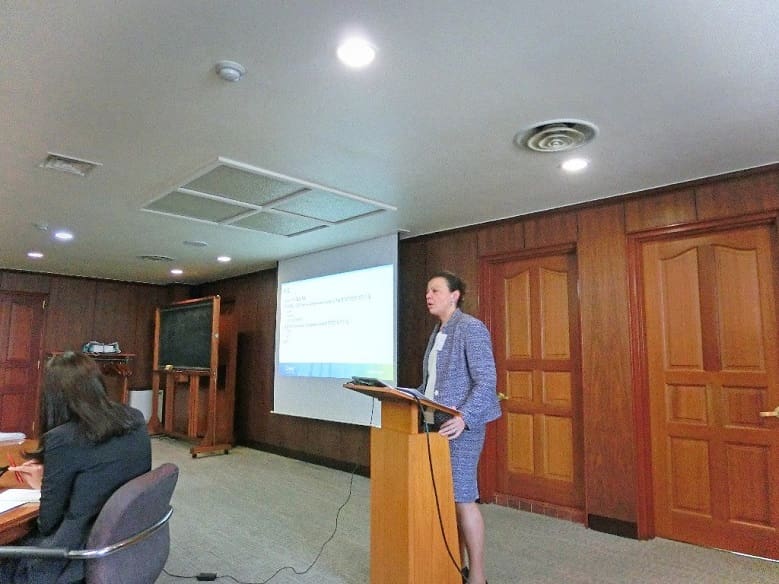SPECIALISED Australian wheat varieties are continuing to underpin the lucrative premium noodle industries in Japan and Korea – and there are opportunities to expand demand for Australian wheat for other products.
For many years, custom-bred Australian noodle wheat has been highly valued in Japan and Korea for premium quality white salted noodles. Both markets have exacting standards for quality and supply.
In May, representatives from the Australian Export Grains Innovation Centre (AEGIC) travelled to Japan and Korea to conduct Australian Wheat Technical Seminars with flour millers.
AEGIC CEO Richard Simonaitis said the annual seminars were an important part of maintaining Australia’s relationships with Japan and Korea.
“These seminars give us an opportunity to enhance flour millers’ understanding of Australian wheat and its suitability for various noodle, bread and sweet baked products, and work through any issues directly with them,” he said.
The Tokyo seminar was attended by about 80 people, with about 35 attending in Seoul.
All major flour milling companies in each country were represented.
AEGIC wheat technical markets manager Dr Larisa Cato led the technical presentations.
This year’s seminars also included presentations from Grains & Legumes Nutritional Council (GLNC) general manager, Dr Sara Grafenauer, who presented information on the health and nutritional benefits of consuming whole grain foods produced using our white wheat.
Mr Simonaitis said Australia had a long history of producing high quality noodle wheat for Japan and Korea, and there were opportunities to find new uses for Australia wheat in these markets.
“The Australian wheat industry has been working with the Japanese Flour Millers Association (JFMA) for 30-plus years to ensure that varieties classified for ANW meet the strict Japanese standards for udon noodles,” he said.
“On behalf of the Australian industry, AEGIC runs a highly-trained sensory noodle evaluation program, in collaboration with the JFMA. The evaluation involves blind sensory testing (taste, appearance, mouthfeel) of advanced unreleased ANW varieties to help classification and ensure Australian noodle wheat meets Japanese requirements.
“As part of this program, AEGIC periodically hosts a JFMA representative to support sensory evaluation of ANW lines and help with noodle panel training. AEGIC has the only sensory panel trained by Japanese visiting noodle experts.”
In recent years AEGIC has expanded the sensory work to also include the hard component of the udon blend (i.e. APW /APWN varieties) to better understand the quality of the overall blend.
AEGIC is also conducting a project on the quality requirements for yellow alkaline / ramen noodles.
This work is in progress and will lead to better-defined targets for Australian wheat breeders of the preferred quality aspects for ramen noodles.
The project aims to understand the potential opportunity for selected AH varieties and their suitability for yellow alkaline noodles in Japan and South Korea.
A separate project is examining opportunities to grow the use of low-protein Australian wheat such as ANW2 and low-protein ASW for sweet products in Japan and other Asian markets.
Fact file: Noodle wheat for Japan and Korea
ANW varieties have been specifically developed for udon noodle production in Japan and Korea. Collectively these countries annually purchase about 1.6mmt of noodle wheat blend (ANW and APW).
Australian noodle wheat is preferred for premium udon noodles due to its excellent starch quality (high swelling properties), bright flour colour and excellent colour stability, medium dough strength, and medium protein levels.
In addition to wheat and flour quality testing, sensory testing is also an important means of evaluating wheat varieties for classification into ANW.
Ideal udon noodle should have a unique balance of softness and firmness, often described as ‘soft noodle with slight surface firmness’ combined with good elasticity and stickiness.
Colour is also important. Favourable traits include good colour and colour stability, with superior udon noodles being described as having a ‘bright, creamy, slightly yellow colour’.
Australian wheat for noodles across Asia
The term “noodle wheat” generally means the highly specialised ANW/APW blends for white salted (udon) noodles in Japan and South Korea.
However, other Australian wheat classes – including APH, AH, APW and ASW – are highly valued for many other types of noodles in different markets across Asia.
Wheat classes
ANW: Australian Noodle Wheat
ANW2: ANW that hasn’t met grade requirements
APW: Australian Premium White
APWN: Australian Premium White Noodle
APH: Australian Prime Hard
AH: Australian Hard
ASW: Australian Standard White
Source: AEGIC
Grain Central: Get our free daily cropping news straight to your inbox – Click here



HAVE YOUR SAY